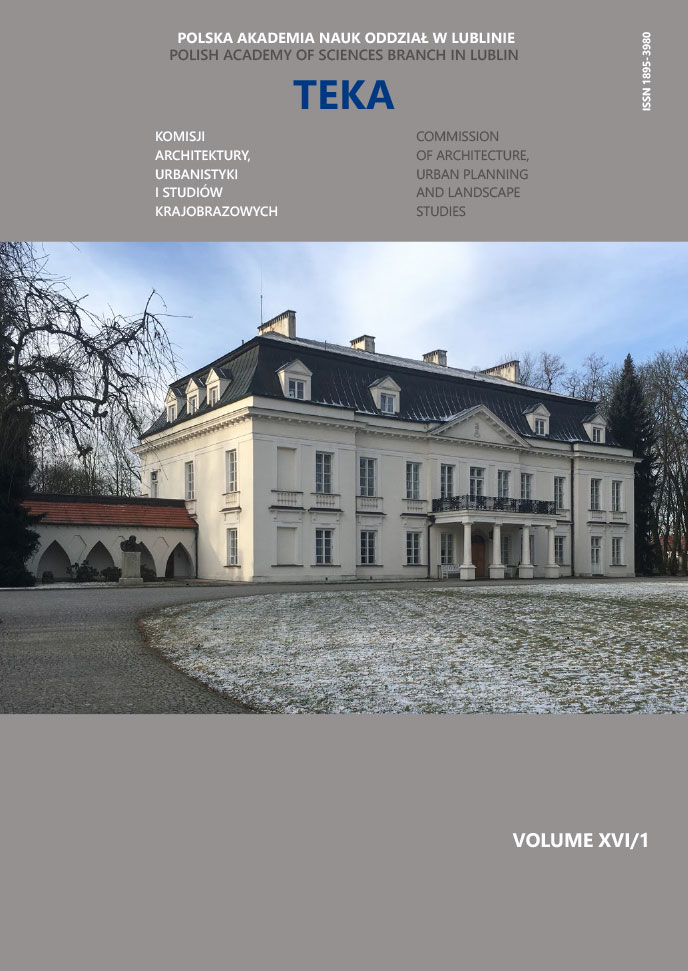Unconventional exhibition spaces as an example of the synergy of architecture and art
Main Article Content
DOI
Authors
Abstract
The article pertains to the relationship between an artwork (painting) and architectural space, as well as the issue of adapting unconventional architectural spaces for an exhibition function in relation to the author's exhibitions presenting the paintings from the same painting series. Different exhibition concepts of each of the exhibitions emphasize the role of a painting in shaping the architectural space and the quality of this space. An artwork becomes a tool that organizes space and influences its quality.
At the Faculty of Architecture of Poznań University of Technology, as part of the research project of Professor A.M. Łubowski and J. Stefańska, D.Sc., titled "Artwork in Architecture", there has been research conducted on the correlation of architecture and art. The author was invited to participate in three exhibitions carried out as part of this project. The experiences connected with the project have been described in this article.
The problem of using the interiors of buildings whose original purpose was different from exhibiting art , became a part of the author's research carried out in the form of individual and collective exhibitions. Two of them, which took place between 2017 and 2018, showcased paintings from the same series, entitled " I Have Been to Hel(l) and Back. And: Let me Tell you, It Was Wonderful ”, highlighted the importance of the dialogue between architecture and art and created awareness how much this interdependence influences the transformation of the perception of both art and architecture. Appropriate compositional solutions and an appropriate selection of artworks contribute to the complete visual satisfaction of the recipient. Ill-considered combinations cause visual discomfort, which detracts from the potential of both works of art and architectural space. Therefore, it is a need to perform an in-depth analysis of the relationship between the artwork and architectural space, and to avoid conventional, schematic exhibition solutions.
The same works placed in various spaces affect the viewer in a different way. The change of the environment influences the change of perception, which creates new interpretative possibilities for the painting’s narrative, while the architectural space gains a wider context of reception through its individualization and increased accessibility. The emotional and intellectual aspect of painting enriches the space with new meanings.



